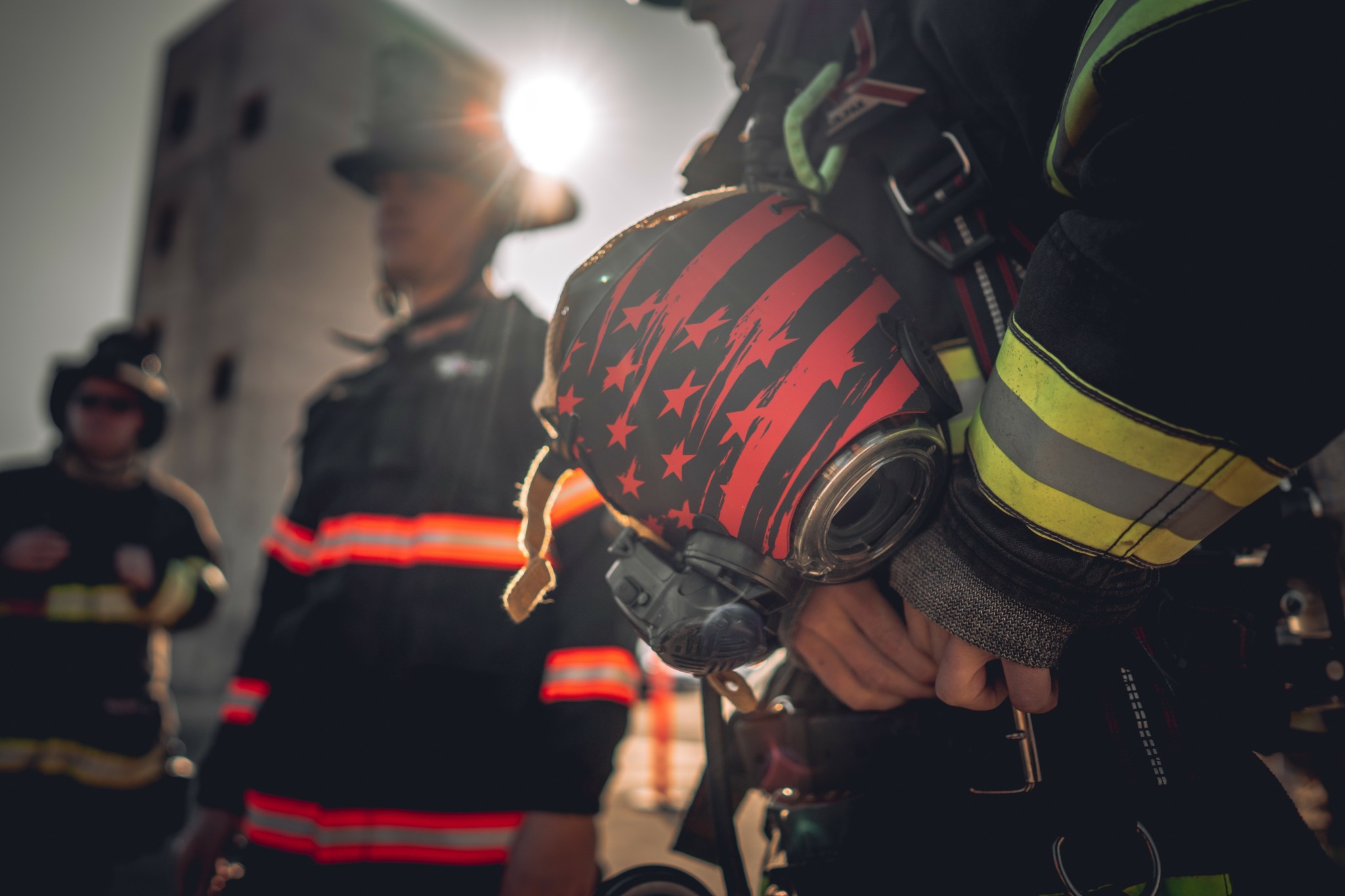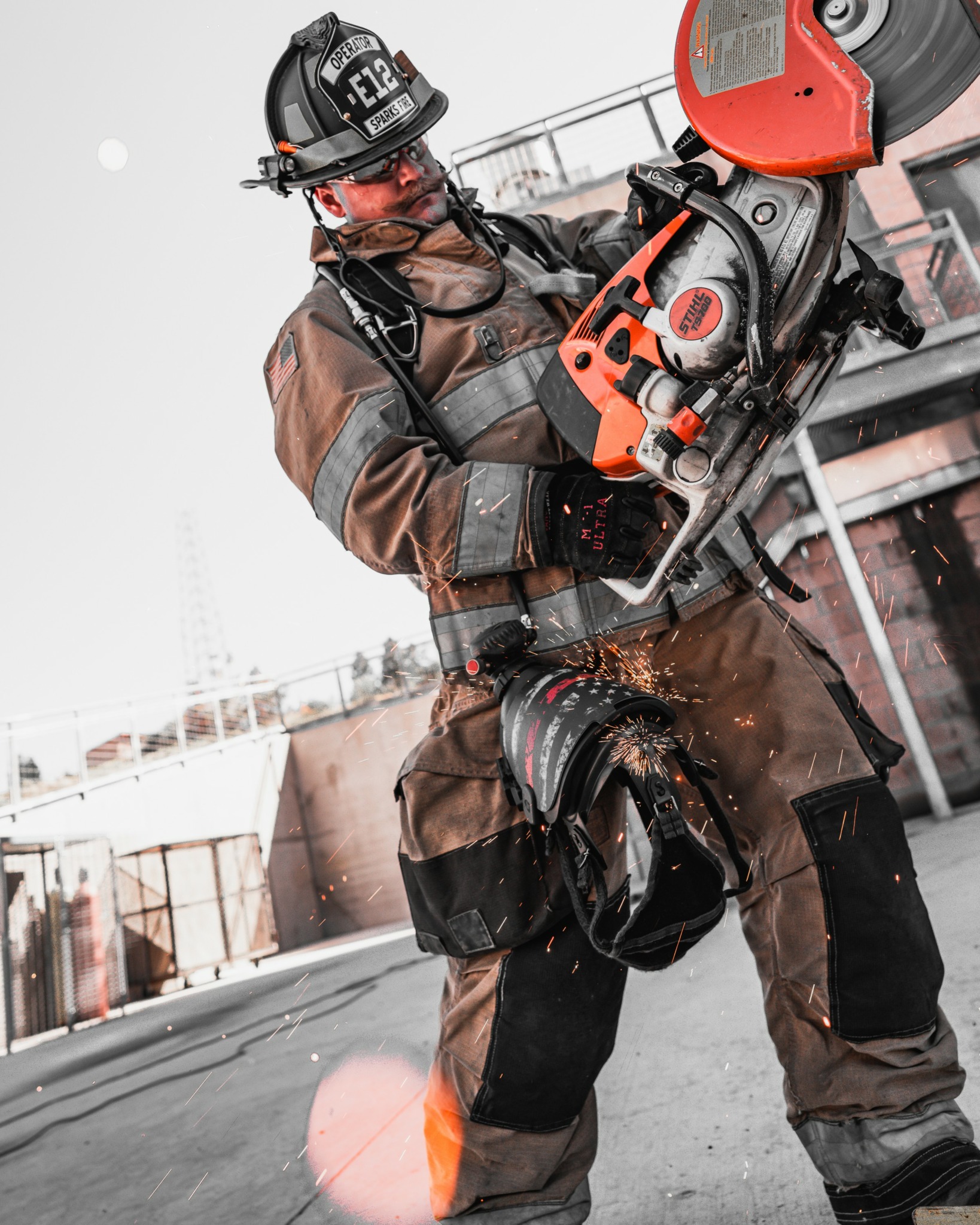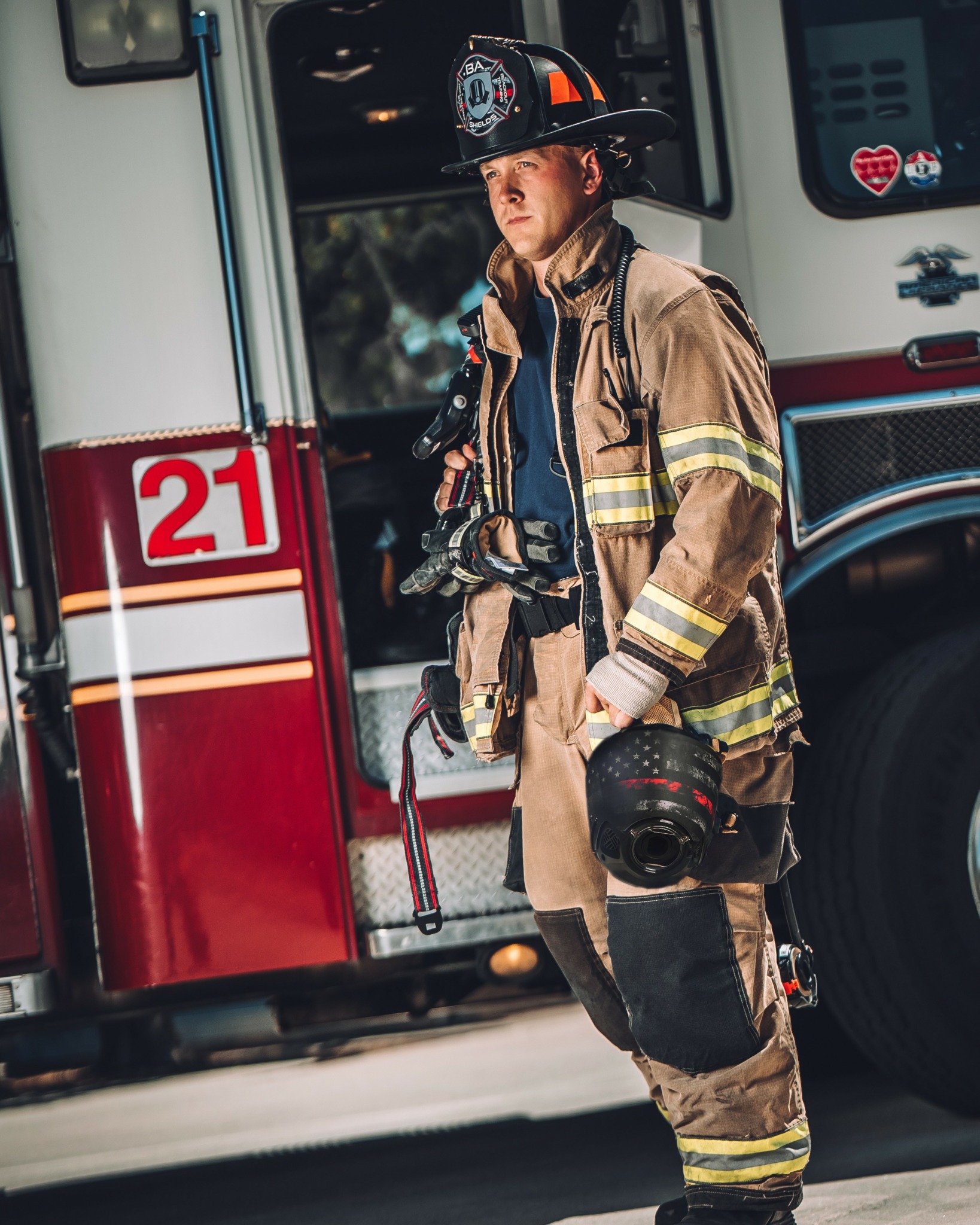We’re excited to introduce you to the always interesting and insightful Pat Case. We hope you’ll enjoy our conversation with Pat below.
Alright, Pat thanks for taking the time to share your stories and insights with us today. Often outsiders look at a successful business and think it became a success overnight. Even media and especially movies love to gloss over nitty, gritty details that went into that middle phase of your business – after you started but before you got to where you are today. In our experience, overnight success is usually the result of years of hard work laying the foundation for success, but unfortunately, it’s exactly this part of the story that most of the media ignores. Can you talk to us about your scaling up story – what are some of the nitty, gritty details folks should know about?
This is probably one of my favorite topics to discuss:
In the fire service, we end up spending about 1/3 of our lives with individuals who end up becoming like a second family. As cliché as it sounds, this family ends up becoming a secondary support system. We help each other with family problems with financial problems, with the ups and downs of being homeowners, or parents. We give each other advice, whether solicited or not. One of the more fun parts of the job is the dinner table conversation. We joked that the dinner table is where firefighters solve all of the world‘s problems. If you put 10 firefighters in a room and one person throws out a problem, you’ll have 200 ways to solve that problem in 15 minutes. Here’s the challenge: the execution. It’s one thing to have a bunch of ideas but bringing the ideas to fruition and furthermore to continue on with that task is where the challenge lies.
To start with an idea for a business is like building a 1000 piece puzzle and being able to locate the four corners. As we continue to grow our business, we start building the border. The pieces are easy to find and you just have to work to line them up because they have at least one defined edge. The path to continuing running the business is pretty well laid out and other people who have come before you, regardless of the industry have input or solutions to problem, such as what accounting software to use, what regulations to follow, how to open a bank account and so on. Once the business is flowing And a process is somewhat lined out, that’s where you have to determine if the plan is working. I think the reason that Business is fail before the two year mark is a lot of people build the border to the puzzle and then give up when the challenge becomes too great to assemble the middle of the puzzle, which in my opinion is how to truly grow and expand.
For us a component that was very important was to be able to organically grow without needing to take on and leverage someone else’s money, whether that be a loan from the bank or investors. As we grew the business, we reached a plateau around year four, where the time commitment was becoming a lot. I remember having a discussion with my co-owner about the crossroads that we’ve reached. We had to decide whether to exit and sell, exit and drop the business, or tighten our hands on the reins and spur the business forward.
What we settled on with springing, the business forward had to be low cost, and high efficiency. We also wanted to maintain a financial benefit to ourselves for putting the time in. I think one of the hardest things a business owner can do when it comes to scaling is trusting yourself. The work has already been done, and if the framework is showing that the business is viable and consistent then you have to trust that you’ve done the right thing and jump to the next step of expansion or growth. At BA Shields we ended up rolling revenues into the company itself, investing internally at a self-sufficient rate. I think people get wrapped around the axle with taking out debt, thinking that they need to borrow a bunch of money to expand, and sometimes they do, especially when it comes to manufacturing, but if people are your primary assets, it’s OK to expand by adding one or two at a time and not getting out over your skis. Forrest, we were able to grill from a company that was generating four figures of revenue to accompany generating seven figures of revenue in only three years by scaling efficiently. One of the hardest commitments that we had to make in all honesty wasn’t in physical assets, but rather in our staff. I am a firm believer that if you hire the right people and treat them the right way they will do the right thing for the company 100% of the time. But doing that comes at a risk. My biggest risk was not being able to give the employees enough work to justify their wages. Just knowing that their rent, their groceries, and their car payments or something that we were responsible for was a lot to sit with. I had a mentor that told me “you don’t grow unless you grow“. What this means is your business will not grow unless you give it a space to grow. I liken this to a plant that you put in a small pot. No matter how much you nurture the plant it will only grow as big as it can within the confines of the pot. Give that plant the same amount of love, but more room to grow the plant will grow significantly larger. What we found is as we hired more employees, stock more raw materials, and spent more money on marketing, the growth sort of happened organically. We moved into a larger space, even though we only needed half of it at the time, but it didn’t take very long for us to even outgrow That! My biggest advice to somebody looking to scale their business or for those just starting out is that if you have a successful business, that’s starting to plateau take the leap into expanding your space, your employees, and your assets. If you were smart enough business owner to make it past the two year mark, then you will be smart enough to figure out how to use the assets at your disposal. But if you don’t invest in the assets, you won’t have any tools in the toolbox to use, and you’ll be stuck with status quo..

Awesome – so before we get into the rest of our questions, can you briefly introduce yourself to our readers.
My name is Pat Case, I am a fire, captain and paramedic for a fire department in Sparks Nevada. I have 18 years in the fire service and in emergency medical services. I also hold a bachelors degree incorporate finance and investment analysis space that I obtained prior to getting into public safety.
Myself and my business partner, Cody Cavin, who is also a firefighter at the same department started BA Shields to fill a gap within the fire service itself. BA Shields are a hard lens protection for the self-contained breathing apparatus or SC BA that firefighters use to breathe clean air while inside of a fire. As he would imagine, firefighting isn’t a gentle profession, and we end up being pretty hard on our equipment, which is why it needs to be durable. One of the most important but least protected pieces of our equipment is the mask that we wear inside of those deadly oxygen deficient environments. Imagine having a $500 pair of glasses or sunglasses and when you don’t want them on your face, you just stick them in your pocket. There was no good way to protect the lens of our mask while it wasn’t in use on our faces. What we did was create something to keep the only thing between us breathing fresh air, and superheated, toxic smoke safe from scratches, gouges, and abrasions. One of the other things are product allows firefighters to do, is to train efficiently. Going into a structure fire with heavy smoke conditions isn’t like what Hollywood portrays. In fact, if Hollywood movies were more realistic regarding fires, they would be pretty boring because he wouldn’t be able to see much of what the actors were doing. In order to train for these environments, we have a couple options. The most realistic way to train for fires, is to light things on fire. This comes with its own risks of using live fire, environmental concerns, permitting, and a lot of logistics the day of. A more simple way is to use a smoke machine to simulate smoke. This becomes cumbersome if you don’t have a power supply to power, the smoke generator, which itself costs significant amounts of money, and you are using a liquid, which happens to be consumable. BA Shields are the only non-consumable limited visibility training tool on the market that allows firefighters to simulate smoky environments over and over again with just a single one time purchase per mask. BA Shields have allowed firefighters to train on a budget in the most realistic way possible without affecting what they would do with their equipment or gear on a real structure fire. Ultimately this leads to a safer fire ground, less injuries, better tactics, and better train firefighters.
I think one of the things I’m most proud of is building up our brand recognition within the Fire service. We’ve become a trusted name with firefighters. Firefighting truly is a brotherhood and the last thing we would want to do is sell other firefighters a trinket that didn’t work or was expensive with the pure motive of profits. I believe that we are in this for the right reasons which are providing a way to protect the most vulnerable piece of our equipment on the fire ground as well as provide a premiere alternative for training that is fast, effective, and inexpensive, with the well-being of our brothers and sisters across the country being front and center.
Have any books or other resources had a big impact on you?
Our entire manufacturing process has been based off of Kaizen. Utilizing a two second lean strategy where the focus is on, allowing the employees to create their own efficiencies. One of the ways we do that is encouraging our employees to alter the process, even if it only saves a second or two, but we encourage them to find new efficiencies every single day. By the end of the week you’ve now saved 10 seconds in your assembly process. Rinse and repeat over an entire year and your process. become significantly more polished. We don’t hold any six sigma certifications, but we subscribe to the teachings of process efficiency, just in time inventory, and continuous improvement.
Another component of our philosophy is we want to maintain control of the manufacturing process every step of the way, which is why our product is made by hand in the United States.

What do you think helped you build your reputation within your market?
Face time with the company and the product itself. People want to see the faces behind the company. I feel like America today has become so corporate it shocks people who call us and ask to speak to accounting and I answer the phone. When they need to talk to somebody in sales, I answer the phone. When they need to talk to somebody in shipping, you guessed it, I answer the phone. for us, that’s huge! Treating the customer is the way that I would want to be treated without being up sold or fed a line of BS is also pretty significant. I feel like in today’s day and age, our target market of 18 to 55-year-olds Can smell it when they’re being sold something. My job is to highlight the pain points that my product solves and give you an opportunity to try it. After that word-of-mouth from the customer to other people in their station or other firefighters at other trainings has been our primary point of advertising. As I said before, firefighting is like another family. When I talk to firefighters on the East Coast, we can still speak the same language, we have the same problems, we get to do the same fun things at work. It takes a long time to earn the respect of your customers or your peers, but that reputation can crumble in just a second if the business sees profits and money over its mission. One of the other things we were fortunate to have is being significantly well-versed with the industry, I’m not sure that we would have done as well if we hadn’t been in the fire service to begin with. When I show up to work at my fire station, I am doing the same job, fighting the same battles, and using the same equipment as my customers.
Contact Info:
- Website: https://Www.bashields.com
- Instagram: BA_Shields
- Youtube: Bashields2599



